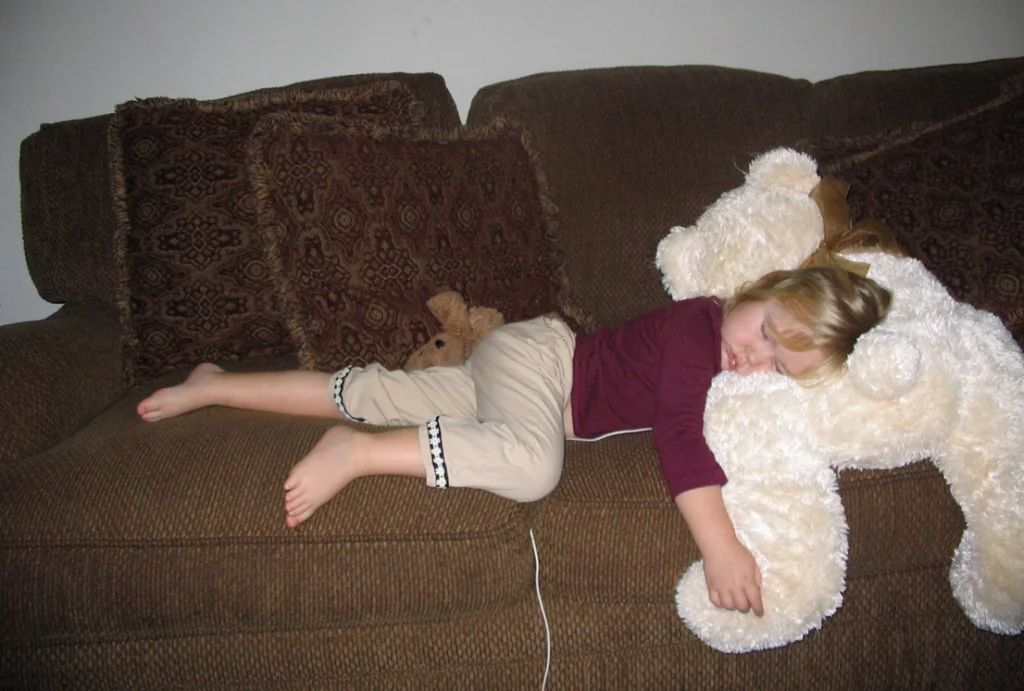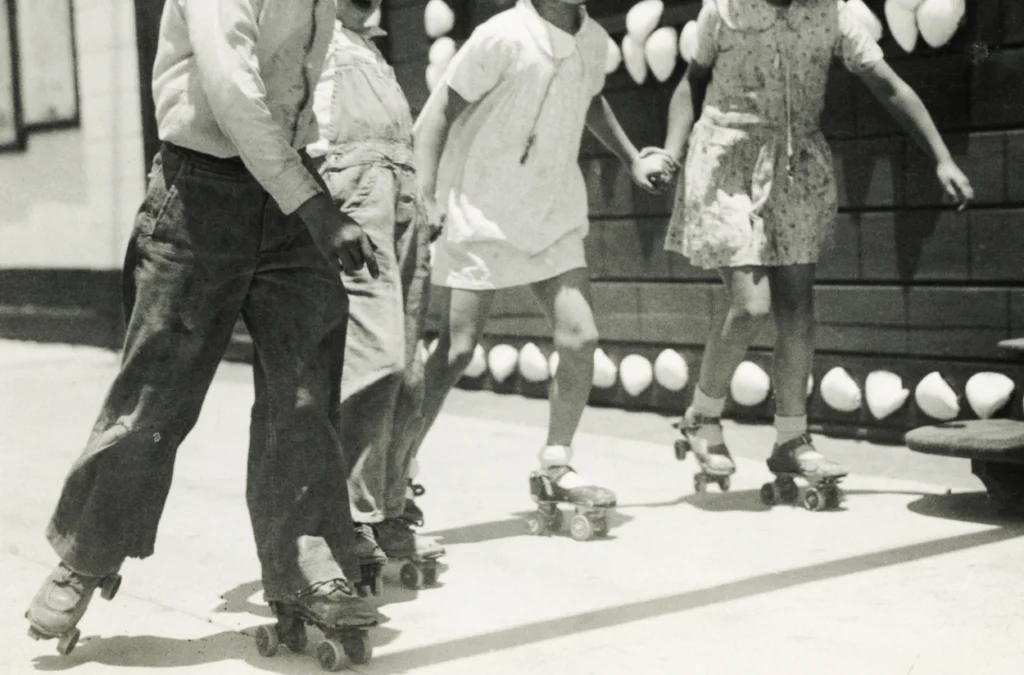Long before play dates were scheduled via text message or apps tracked your children’s whereabouts, visiting a friend’s house in the 1980s was governed by a complex set of unwritten social protocols and strange household-specific customs. For kids growing up during the Reagan era, navigating these social waters meant mastering an intricate dance of parental permissions, neighborhood boundaries, and wildly inconsistent house rules that could differ dramatically from one home to the next. These visits—arranged without cell phones, conducted without parental supervision, and free from digital documentation—shaped our understanding of friendship, authority, and social navigation in ways that seem almost foreign today. Let’s revisit the strange rituals and unspoken etiquette of 1980s childhood social calls that every Gen-Xer and elder Millennial will instantly recognize.
1. The “Can Jimmy Come Out and Play?” Doorbell Protocol

The primary method for initiating a hangout session wasn’t a text or phone call—it was physically walking or biking to your friend’s house and ringing the doorbell. This seemingly simple act was governed by strict unspoken rules: you never rang before 10 AM on weekends (though many neighborhoods had specific acceptable starting times that everyone somehow knew), you stood a respectful distance from the door after ringing, and you prepared a formal request using the oddly stilted phrasing: “Can [friend’s name] come out and play?” or “Is [friend] home?” Washingtonian has a list of vital questions parents themselves ought to ask whenever friends are hanging out together.
The response to this question could range from a casual “Go on up, he’s in his room” to a formal interrogation about your intentions, expected return time, and whether your own parents knew your whereabouts. Some friends’ parents would make you wait awkwardly in the front hallway or porch while they consulted with your friend, who might have been mere feet away but pretending not to hear the doorbell if they weren’t in the mood for company. The strangest households required you to leave and return later rather than allowing you to wait inside, regardless of weather conditions or neighborhood safety, creating the bizarre spectacle of children loitering around front yards waiting for friends to complete chores or family obligations.
2. The “Parent Introduction Hierarchy” System

Every household had its own unwritten rules about how visiting children were expected to interact with the resident adults, creating a confusing social landscape that changed from house to house. Some parents insisted on formal greetings with eye contact and handshakes, while others barely acknowledged your existence, preferring to maintain separation between adult and child worlds. The first visit to a new friend’s house always involved an awkward evaluation period where you tried to determine which type of household this was while simultaneously being assessed for acceptability. Find out why The New York Times likens parents becoming friends with other parents to something akin to dating.
The highest-stress version involved parents who expected you to call them “Mr. and Mrs. Lastname” while their next-door neighbors insisted “call me Susan” was the only acceptable greeting. More confusing still were households where parents had different expectations—a formal father requiring respectful distance paired with a casual mother who hugged all her children’s friends or vice versa. Most children developed a sixth sense for reading these dynamics quickly, automatically adjusting their behavior within moments of entering a new household, a social adaptation skill rarely needed in today’s more standardized parenting landscape where adults typically establish consistent expectations across friendships.
3. The “Random Food Rules” Minefield

Every 1980s household had its own bizarre food policies that visiting children were expected to intuitively understand and follow without explanation. Some homes operated with astonishing generosity—”help yourself to anything in the fridge”—while others maintained strict scarcity mindsets where accepting even offered food could somehow be a social misstep. The most stressful were houses with unmarked “special” foods reserved for specific family members or occasions, creating potential for horrible faux pas when an innocent visitor consumed Dad’s designated sandwich meat or the last ice cream sandwich being saved for someone’s after-school reward. As for what foods would be set out, Tinybeans has a comprehensive list of popular ’80s foods sure to satiate any craving.
The dinner invitation added another layer of complexity, with some families extending casual mealtime invitations if you happened to be present when food was served, while others would pointedly announce dinner preparation as a cue for visitors to depart immediately. Most children learned to wait for a specific, ideally repeated invitation (“Would you like to stay for dinner? Are you sure? I’m making spaghetti…”) before accepting, while maintaining readiness to either join or politely excuse themselves as the household custom dictated. The most awkward scenario involved being present during meal preparation but not receiving a clear invitation or dismissal, creating an excruciating limbo where children would invent reasons to leave rather than appear to be angling for a free meal.
4. The “Don’t Make Yourself at Home” Paradox

Parents in the 1980s would often instruct guests to “make yourself at home,” while simultaneously maintaining an elaborate set of unspoken restrictions about which spaces and objects were actually available to visitors. From living rooms kept pristine for theoretical future guests (and thus off-limits to actual present guests) to decorative towels that should never be used despite hanging in the bathroom, houses were minefields of tempting but forbidden items. The most confusing were homes with visible toys or games that were mysteriously off-limits—often because they were “special” or “new” or belonged to a sibling who wasn’t currently present.
Navigating these boundaries required careful observation and pattern-matching, as explicit rules were rarely stated until after a violation occurred. Most children learned to follow their friend’s lead precisely, sitting only where they sat, touching only objects they touched first, and mirroring the exact level of physical comfort (shoes on/off, sitting on floor vs. furniture) demonstrated by the resident child. The ultimate achievement was graduating to “you’re practically family” status in a household, earning the right to open the refrigerator unannounced or know which kitchen drawer contained the snacks—a level of comfort some frequent visitors never achieved despite years of friendship.
5. The “TV and Entertainment Access” Hierarchy

Television viewing rights varied dramatically between households, creating culture shock for children moving between different media ecosystems. Some homes allowed unlimited television with premium cable channels and minimal content restrictions, while others permitted television only during specific hours or days, often with byzantine rules about which programs were acceptable. The most jarring differences were between households where TV was casual background noise versus those treating it as a special activity requiring permission and planning.
The household entertainment hierarchy extended beyond television to include video games, VCRs, stereos, and computers, each with their own permission structures and usage rules. In some homes, expensive electronic devices were freely available to visitors; in others, merely touching the remote control without explicit authorization was a serious breach of etiquette. The introduction of a new technology like an Atari or Nintendo system temporarily disrupted established patterns, as even normally restrictive households sometimes suspended usual limitations during the novelty period of a new device, creating strategic opportunities for visits during these windows of exceptional access.
6. The “Whatever My Friend Is Allowed, I Can Do Too” Argument

The 1980s parent’s kryptonite was the devastating logic of “but my friend gets to do it,” forcing them to either concede or explicitly acknowledge their stricter standards. Children leveraged visits to permissive households as powerful evidence in ongoing negotiations over bedtimes, television access, junk food consumption, and curfews. Meanwhile, children from stricter homes experienced temporary freedom under more relaxed rules when visiting friends, creating cognitive dissonance when activities forbidden at home (watching R-rated movies, consuming massive quantities of sugar, saying “butt” without consequences) failed to produce the disastrous outcomes their parents had predicted.
This cross-pollination of household rules created complex social dynamics, as children from stricter households sometimes preferred visiting more permissive friends, while permissive parents occasionally implemented temporary restrictions when hosting more sheltered visitors. The most awkward scenario occurred when parents conferred directly about applicable rules, creating humiliating real-time negotiations (“Her mom says she’s not allowed to watch MTV”) that transformed peer relationships into power struggles. The universal child response—pinky-sworn secrecy pacts to hide questionable activities—was the inevitable result, creating solidarity through shared minor rebellions against inconsistently applied adult authority.
7. The “Household Phone Etiquette” Gauntlet

Using a friend’s home phone required navigating an invisible maze of household-specific protocols that varied wildly across families. Some homes had explicit time limits for calls, while others restricted outgoing calls entirely for visitors. The highest-pressure scenario was requesting permission to call your own parents, theoretically a reasonable request that could nonetheless trigger tension if it implied criticism of meal offerings or suggested over-controlling parental relationships by seeming too eager to check in.
The most stressful phone scenario was answering your friend’s ringing phone, a necessity in the pre-voicemail era but fraught with potential pitfalls. Each household had different expectations about message-taking protocols, ranging from casual “tell them I’ll call back” approaches to formal requirements involving dedicated message pads and specific information collection. The worst-case scenario was answering only to encounter your friend’s intimidating parent or relative on the line, requiring you to explain your presence and relay messages with adult-level accuracy despite your visitor status. These interactions forced children to rapidly code-switch between peer communication styles and adult formality, developing contextual language skills rarely required in today’s text-based communication landscape.
8. The “Bathroom Privacy Spectrum” Challenge

Every household maintained drastically different norms regarding bathroom privacy, creating anxiety-inducing uncertainty for visitors needing facilities. Some families maintained strict closed-door policies with explicit privacy expectations, while others had surprisingly casual approaches—doors left ajar, family members continuing conversations through partially open doors, or siblings sharing bathroom space simultaneously. First visits to new homes often involved desperately needing facilities but delaying requests until absolutely necessary, fearing unknown bathroom protocols or embarrassing permission interactions.
The physical bathroom experience itself varied dramatically across households, with some maintaining pristine, hotel-like facilities with fancy guest soaps that paradoxically seemed too decorative to actually use, while others presented visitors with nearly empty toilet paper rolls or damp communal towels of uncertain status. Most children developed a mental database of which friends’ homes had “safe” bathroom situations and planned hydration levels accordingly, sometimes limiting liquid consumption before visiting households with particularly stressful bathroom dynamics. The ultimate power move—asking to shower at a friend’s house—required friendship levels few achieved, representing the pinnacle of household integration.
9. The “Sleepover Permission Quest” Marathon

Securing sleepover approval required completing a complex, multi-stage permission process involving negotiations with multiple adults across different households, all conducted without direct parent-to-parent communication channels. The typical sequence began with tentative planning between children (“Maybe you could sleep over Friday?”), followed by conditional permission requests to your own parents (“If their parents say it’s okay…”), culminating in formal invitations from your friend’s parents, ideally via actual telephone conversation rather than child-relayed verbal message, which parents rightly treated with suspicion.
The sleepover itself operated under temporary special rules distinct from regular visit protocols, with normal bedtimes suspended and access granted to otherwise restricted foods and entertainment. The most coveted achievement was the “double sleepover”—consecutive nights alternating between homes—which required diplomatic negotiations worthy of international treaties and created a temporary alternate universe where standard household rules were replaced by a hybrid culture combining the most permissive elements from both families. The rarest achievement was the spontaneous sleepover approval—permission granted on the actual day without advance planning—representing the highest possible level of inter-family trust and requiring friendship longevity few relationships achieved.
10. The “When to Go Home” Interpretation Challenge

Without specific pickup times or texted reminders, determining when a visit should conclude required reading subtle and often contradictory social cues. Some households provided clear signals—porch lights activated, parents pointedly checking watches, direct statements like “Jimmy needs to finish his homework now”—while others relied on children intuiting appropriate departure times from meal schedules, parental mood shifts, or television programming transitions. The most awkward scenarios involved hosts and visitors misreading cues, creating uncomfortable extensions where children overstayed welcome or abrupt endings when gentle hints were taken as firm dismissals.
Different families maintained wildly different expectations about visit duration, with some considering hour-long visits sufficient while others operated on half-day or full-day assumptions. The universal childhood tactic for avoiding awkward departures—the “countdown request” of asking to do one more specific activity before leaving—recognized adult authority while negotiating for marginally extended time. The sophisticated visitor eventually developed clock-free timing intuition, sensing the invisible tipping point when welcome shifted from active to tolerated, and departing just before explicit hints became necessary, a social skill that earned parental approval and increased future invitation likelihood.
11. The “Different Family Dynamics” Anthropology Lesson

Visiting friends’ homes provided children with their first exposure to the startling reality that families operated according to dramatically different norms, values, and communication styles. The shock of witnessing parents who didn’t yell versus those who shouted constantly, families who expressed physical affection openly versus those maintaining formal distance, or households with rigid structure versus chaotic flexibility forced children to recognize their own family culture as just one possibility among many. These cross-family exposures often represented children’s first encounter with genuine cultural diversity in its most intimate form.
The most bewildering differences often involved conflict resolution styles, with some children horrified by open argumentation in families that processed disagreements loudly, while others were unsettled by households maintaining pleasant surfaces despite obvious tensions. Children typically responded by becoming amateur anthropologists—carefully observing alternative family systems, mentally comparing them to their own household cultures, and occasionally bringing home requests for practice adoption (“The Andersons let their kids decide their own bedtimes”). This exposure to diverse family systems provided crucial perspective that sometimes allowed children to appreciate positive aspects of their own family culture they’d previously taken for granted or recognize genuinely problematic dynamics they’d normalized.
12. The “Reporting Back” Intelligence Briefing

Upon returning home, children faced the universal debriefing session—parental questions about the visit designed to extract household intelligence from behind enemy lines. Standard inquiries included “What did you have for dinner?” (assessing nutritional standards), “Was his mother home the whole time?” (evaluating supervision levels), and “How does their house look inside?” (comparative housekeeping assessment). Children quickly recognized these questions as comparative parenting evaluations rather than genuine interest, developing strategic answers that protected friend relationships while satisfying parental curiosity.
The most sophisticated children provided carefully curated information—mentioning the vegetables served but omitting unlimited soda access, acknowledging parental presence while downplaying extended work calls or magazine-reading periods, describing public rooms while omitting less supervised basement or bedroom activities. This selective reporting represented children’s first negotiations with competing loyalties and information control, balancing friendship privacy against family transparency expectations. Parents, meanwhile, absorbed these filtered reports into their mental neighborhood maps, constructing elaborate theories about other families’ functioning based entirely on child-reported fragments and occasional front-yard observations—creating community understandings built on hilariously incomplete intelligence.
The childhood experience of visiting friends’ homes in the 1980s, with its intricate social rules and household-specific customs, provided formative lessons in adaptability, contextual behavior modification, and social intelligence rarely required in today’s more standardized, digitally-mediated interactions. Those awkward doorway conversations, the careful observation of house-specific policies, and the navigation of different family cultures served as preparation for adult world complexities—teaching children to read unwritten rules, adapt to new environments, and recognize the diversity of human social organization. While today’s more structured playdates and constant parent-to-parent communication channels may reduce anxiety and increase safety, something valuable was embedded in those unscripted social negotiations—the development of flexibility, resilience, and the understanding that different doesn’t mean wrong. The children who successfully navigated the peculiar household rules of 1980s America emerged with social adaptation skills that continue to serve them even as their own children experience friendship through very different, and perhaps less anthropologically rich, arrangements.


